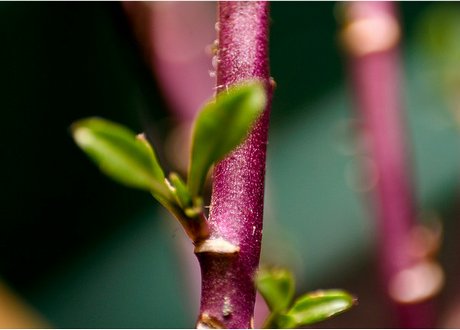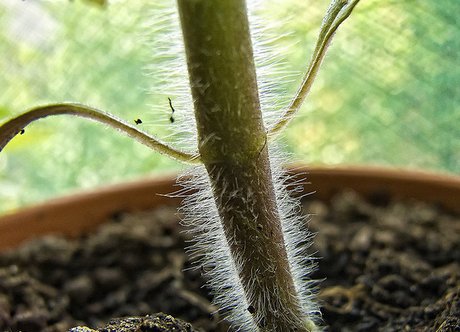The stem is one of the vascular plants’ structural axes.
The term stems is often confused with shoots; shoots are basically the new fresh plant that grows without the stem being included.
The plant stem is normally divided into nodes and internodes, wherein the nodes are responsible in holding the buds that will soon grow into leaves, cones, other stems, and inflorescences (flowers).
The term internode is used to desribe the distance from one node to another.
In the majority of plants, stems are usually located above the surface of the soil, though there are also some plants with stems that run underground.

Plant Stem photograph by Lemon-tea.
The plant stem develops shoots and buds that grow above the ground and there is a transport system inside the stem which allows materials to move up and down the tissues.
Primary Plant Stem Functions
The four main functions of the plant stem include:
- Serves as elevation and support for leaves, flowers and fruits. Stems help in keeping the leaves to stay within the light, and also provide a place for flowers and fruits to grow.
- Transportation of the fluids and nutrients from the roots to the shoots (and vice-versa) in the xylem and phloem.
- Serves as storage of nutrients.
- Aids in the production of new tissues. Stems have the meristems that can generate new living tissues annually the typical life span of plant cells lasts only for one to three years.
Parts of the Plant Stem
The stems of angiosperms, flower bearing plants, including those that are highly modified can be recognized easily from other plant organs due to the presence of buds, leaves, node and internodes. A bud is the embryotic stem that has the ability to grow further. It will develop into a leaf or flower that will be referred to as the leaf buds, flower buds or mixed buds for buds that grow into both leaf and flower.
Within a certain span of time, several buds remain dormant or they can be embedded in the stem tissue and will not be visible.
The terminal bud is the single bud that is located at the apex of the stem and the axillary buds or lateral buds are those that are found in the leaf axils, which is the upper angle between the leaves and stem. Adventitious buds can also rise in the internode of stems, in roots or in leaves. The eyes of potato tubers are in fact buds.

Hairy stem by Tom_Bullock.
Other structures can also be present aside from the obvious buds and leaves on herbaceous stems. Hairs can also grow on stems, which are primarily the outgrowths of epidermal cells; stipules; leaves; and spines, which can sometimes be termed as modified leaves.
Other plant structure can occur in woody stems, in addition to the leaves and buds. Leaf scars can be present, which is the leaves’ point of attachment to the stem; bundle scars, the small raised dots in the leaf scare that serves as the vascular bundles’ broken ends that is connected from the stem to the petiole of the leaves.
Bud scars can also grow — these are small circular marks found around a twig that is left by the falling away of the bud scales.